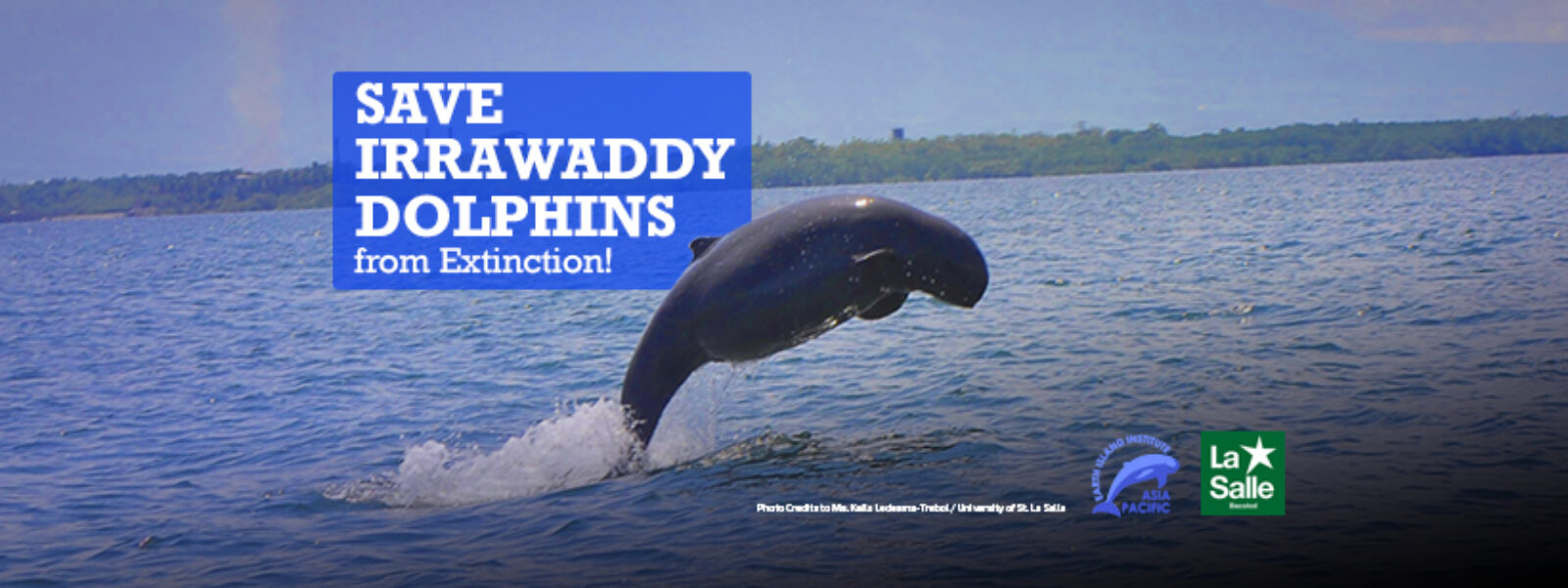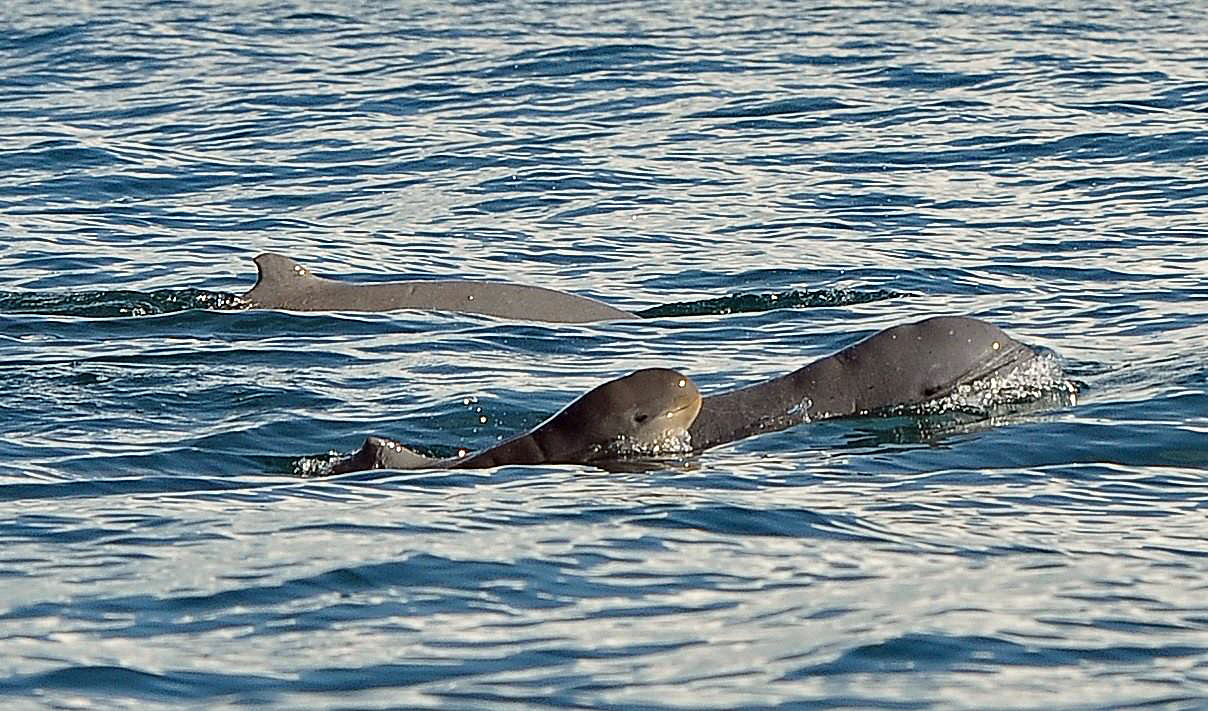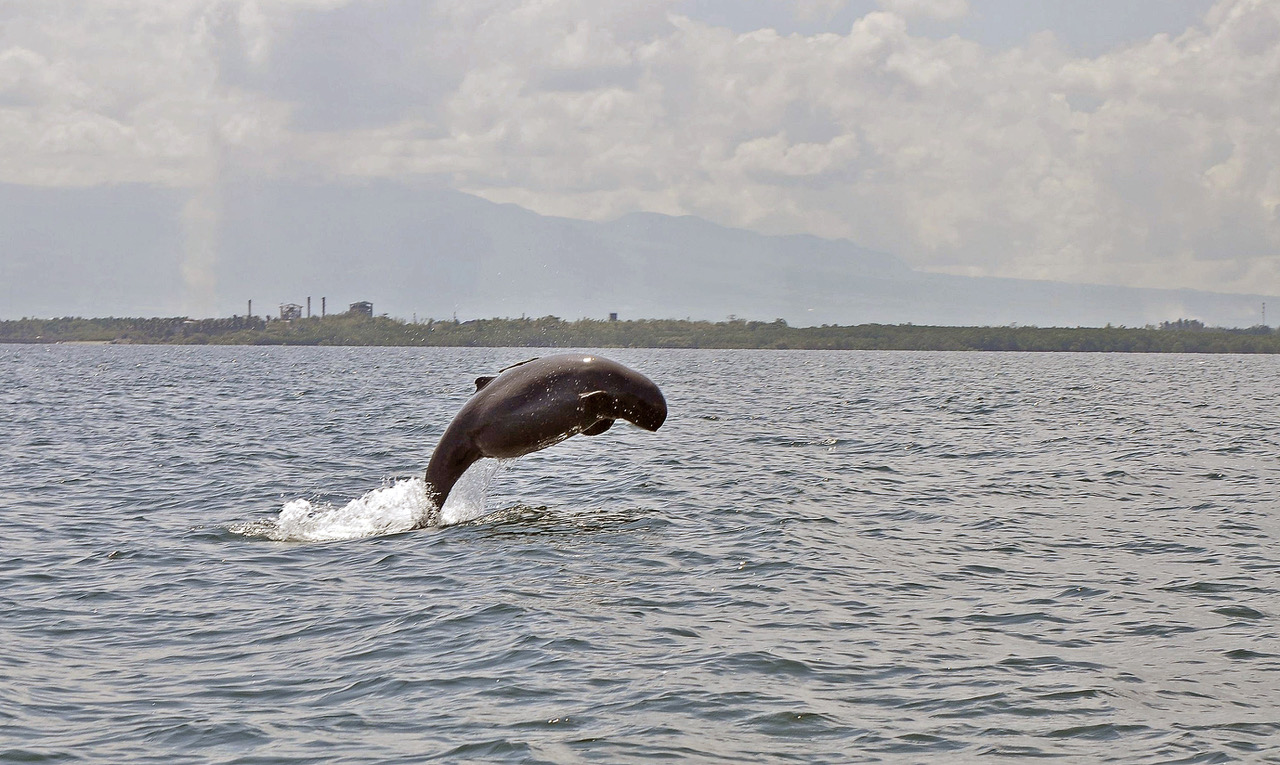

Trixie Concepcion leads the International Marine Mammal Project (IMMP) dolphin-safe tuna monitoring effort from the Philippines, responsible for reviewing tuna shipments caught in the Asian Pacific Ocean. She is actively involved in many wildlife issues in the Philippines, such as the campaign to help save the Irrawaddy dolphins.
I came to know that there were Irrawaddy dolphins (Orcaella brevirostris) in the waters around Negros Island, Philippines when I first met Mark dela Paz in Bacolod City in 2016.
As far as we knew, there was only one known population of Irrawaddies around Palawan, an island west of Manila. But, as Mark would tell me, there is another population of Irrawaddies in Negros Island first discovered in 2010 with the help of fisherfolks. Mark had been studying them for years, with the support of his school, the University of St. La Salle. Based on roughly 15,000 photographs taken over several years, they estimated that there were about 8-19 individual animals in 2016.
Irrawaddy dolphins are air-breathing mammals that live in the sea. They are grey to slate blue in color that gets lighter on the underbelly. They do not have a pronounced snout like other dolphins and have broad and rounded flippers. Irrawaddy dolphins resemble beluga whales but are more closely related to orcas.
In the Philippines, there are three critically endangered sub-populations of Irrawaddy dolphins – these can be found in Malampaya Sound and the Municipality of Quezon (both in Palawan) with the third sub-population in the Iloilo and Guimaras Strait, discovered in 2007 and 2010 respectively. The dolphins are always seen near the river delta and coastal waters of Bago City and Pulupandan Municipality in Negros Occidental. Scientists believe that it is essential to undertake conservation programs in Bago City and Pulupandan Municipality in order to protect the remaining Irrawaddy dolphins.
As early as 2014, Mark dela Paz and a team of scientists had already drafted plans in order to declare the habitat of the Irrawaddy dolphins a Marine Protected Area (MPA). Trainings, seminars, workshops and meetings were conducted with local governments, fisherfolk communities, students, NGOs (Non-governmental organizations like IMMP), and all concerned sectors in order to raise awareness on the need to protect the Irrawaddy dolphins of Negros.
In 2016, the Philippines government designated the Negros Occidental Coastal Wetlands Conservation Area (NOCWCA) as a Ramsar Site, an international designation for wetlands of importance based on the Convention on Wetlands or Ramsar Convention. This covers 110 kilometers of coastline of the island of Negros, including 52 coastal districts (barangays), three cities (Bago, Himamaylan and Kabankalan), and seven municipalities (Pulupandan, Valladolid, San Enrique, Pontevedra, Hinigaran, Binalbagan and Ilog).
In 2017 Bago City declared 130.39 hectares of its waters as a Marine Protected Area (MPA). In the same year, the IUCN declared part of the Iloilo and Guimaras strait as an Important Marine Mammal Area (IMMA), covering 340 square kilometers.
These international recognitions prompted the local governments of Bago City and Pulupandan Municipality to undertake workshops in order to draft Management Plans to save the Irrawaddies.

To date, however, there has been very little action in drafting Management Plans, convening the Management Councils and implementing the plans laid out by scientists to save the last remaining Irrawaddys of Negros. The dolphins continue to die on an average of one individual per year. For the last two years, three Irrawaddy dolphins have died, including a juvenile last September 25th, 2020. Scientists estimate that there are only approximately 10 to 13 remaining individual dolphins left in Negros Occidental. This kind of mortality rate is alarming given the very small number of Irrawaddys in Negros.
Given the urgency in protecting this last population from extinction, Earth Island Asia Pacific launched an online campaign to save the last remaining Irrawaddies of Negros Occidental.
We also convened scientists, environmentalists, animal welfare organizations, Filipinos and the International Community to call on the Philippine government, the Department of Environment and Natural Resources (DENR), Department of Agriculture (DA) and the local governments of Bago and Pulupandan in Negros Occidental to work together to immediately undertake the following:

This December 2020, Award-winning actress Jennylyn Mercado joined the call to protect the last remaining Irrawaddies of Negros via her vlog.
We are glad that our campaign is also reaching an international audience. We may have the opportunity to form networks with similar organizations in South East Asia that are also seeking to protect their last remaining Irrawaddy populations.
We believe we can still pull this species back from the brink of extinction. Please join us in this advocacy, sign our petition and share.